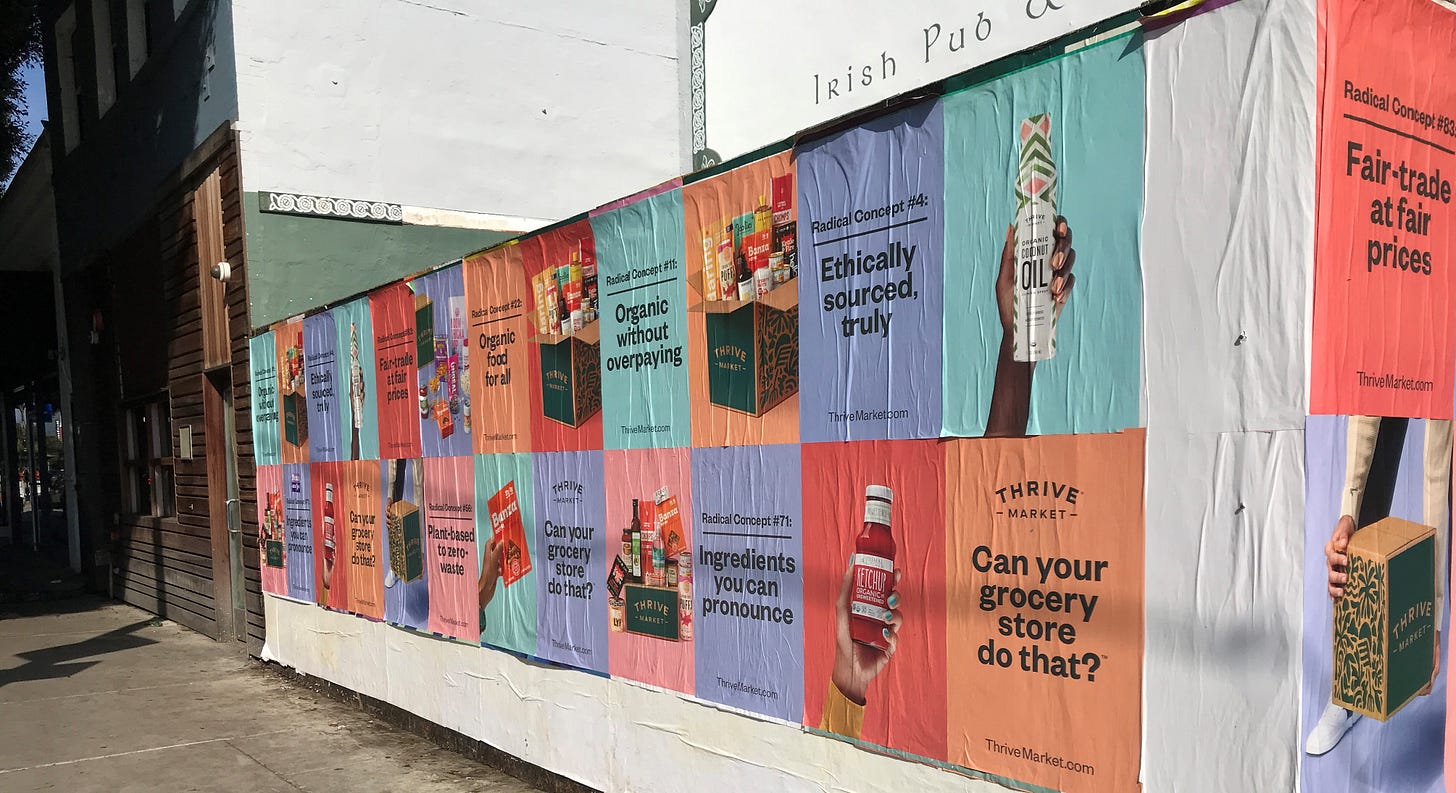A posting about low tech street poster advertising on the temporary fencing around the former O’Briens.
Flyposting, Billposting, Billsniping, Wheatposting and Wild Posting; it goes by many names - but the act is the same - getting posters posted in high traffic areas to deliver the message in a catching way at low cost. The masked vandal / grungy look of wild posting is deceiving - wild posting is a big business - another format of Out of Home (OOH) advertising media. Out of home is generally seeing a resurgence as a counterpoint to digital media. Advertisers now pay a premium to have their posters wild posted in cities because, unlike most paid advertising media, it’s cool. American Express, Apple, Calvin Klein, Microsoft, Giorgio Armani, and Sony are all big fans of wild posting as as a medium it lends these brands a younger and edgier image.
The posters used are typically made of a lightweight (20-pound), uncoated (so the paste can seep through) bond paper and printed using modern printing techniques that enable full-color designs, halftones, and photographs. A layer of wheatpaste glue (made from flour and water) slightly larger than the poster is pasted onto the target surface. Then the poster pressed into the paste, any air pockets squeezed out and then another layer of pasted rolled over the top of the poster to seal it.
Part of wild posting’s cool is the perception that it’s illegal.
Post No Bills (USA), No Flyposting (UK), or Défense d'afficher (France) signs refer to laws which forbid the posting of handbills or any type of signs on public property. Besides being supported by the cities who found the posters unattractive, these laws were supported by commercial billboards owners as it can detract from the view /use of their billboards. Private property owners often put up "Post No Bills" notices on buildings to discourage street poster advertising - but this has no legal effect.
Santa Monica’s Sign Code doesn’t distinguish public from private property and prohibits all “…posters tacked, painted, posted or otherwise affixed on the walls of a building, or on a tree, pole, fence or other structure, and visible from a public way.” But enforcement is an issue as the Sign Code mainly addresses permanent signs.
Wild posting costs will vary based on 3 factors: real estate, demand, and legality. The demand for wild posting, coupled with the limited available sites, the density of urban markets and the exposure they offer, plus the human labor required to install and remove, makes wild posting more costly than most realize.
The posters in these photographs (all taken in January 2022 - and only a sample of all the postings) lasted several days before they were covered over by another aggressive posting. The layers quickly buildup to several inches thick before the whole thing rolls off the fence.









